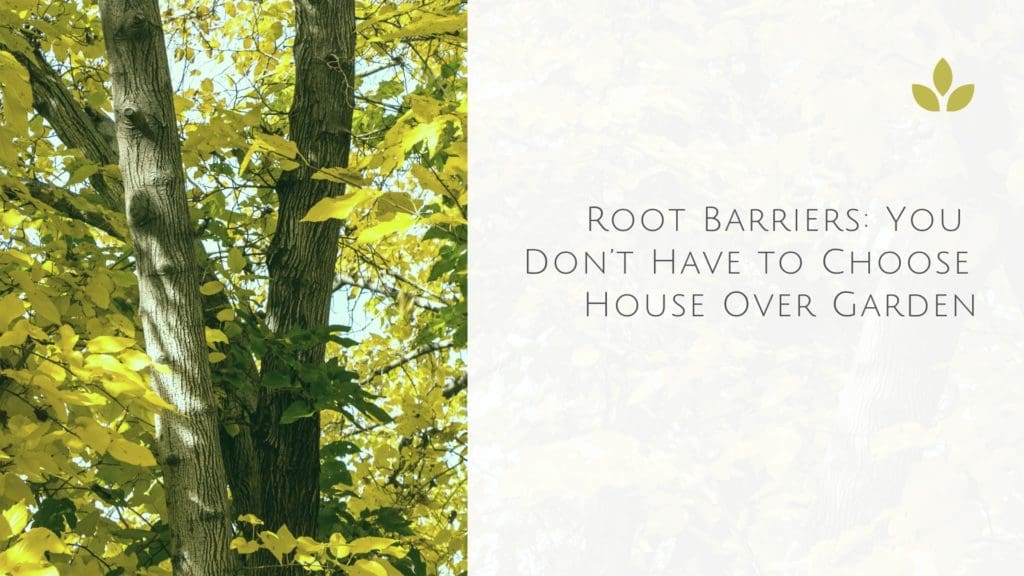Are you dealing with trees or plants getting too close to your foundation? Perhaps you are already affected by breaches to your foundation from existing plants or trees near your home, and you need to know what you should do next. Alternatively, maybe you have a new home and you want to landscape your property, but you are not sure what you should or should not put near the structure. Perhaps you want to know what you can put into place that can prevent any damage. No matter what your situation is, you have come to the right place to get some answers.
Knowing Your Landscape
If you already have established plants and trees near your home, then it will benefit you to know what type they are, as this will help you determine what step you will need to take next. You should never have to choose between a house and a garden. If you have large trees that touch your home in any way, chances are the roots are either up next to your foundation or underneath it. Some of the trees that you should not have close to your home include:
- Elms
- Oaks
- Poplars
- Silver Maples
- White Ash
- Willows
All of these varieties have extensive root systems that can harm your foundation in many ways. If you want your trees and your foundation to co-exist without problems, you should only have smaller, ornamental trees or trees that take a long time to mature.
If you are concerned about the varieties of plants that are near your foundation, you will need to do some research to see what the root systems are like and if they are large consumers of water.
Of course, if you are already dealing with damage to the base of your home, you’ll want to know what you need to do. First, you should contact a professional to assess any damage there might be and if it needs to be repaired. If the roots have done no actual harm, then you can proceed to take out any offending trees or plants that pose a threat to your home. Care must be taken, as removal of trees, especially large ones, can create a problem with your foundation as well.
Root Barriers
In any of the above situations, one of the best things to do to help prevent any further damage is to either install a root barrier or to have one installed for you by a reputable company.
Of course, the ideal time to install barriers is before any roots threaten your foundation. Not having to deal with established landscaping is ideal, but if you are not that fortunate you will have to work with or around what is already in place.
Types of Barriers for Effective Foundation Protection
If you are constructing a root barrier yourself, you will need to decide what type of barrier that you want to use. There are two different types of root barriers, plus a combination of the two, which are:
- Permeable – Made up of a mesh screen that lets the moisture and small root systems through.
- Solid – These are hard panels that are corrosion impervious and are made of fiberglass, metal, or plastic. With this type, no roots or moisture will be able to get through.
- Permeable & Solid Mixture – This form is best to use, as it allows water where needed. It also has a chemical inhibitor that can be applied, which lasts an extended period. This inhibitor prevents root growth.
Installation of Root Barriers
After you have chosen the barrier system that is right for you, next is putting it in place. If you have existing trees and plants, then you will need to dig around the base of the foundation, taking care to cut away any close roots. Once you have made sure that there are no obstructions within the trench that you create, you can put the barriers into place.
The deeper you can get your barrier, the better chance of keeping unwanted roots out. Anywhere from thirty to forty-eight inches deep is a great range and can last for a considerable length of time. The width needs to be at least three to four inches to be able to place the barrier into the ground. The top of the barrier also needs to be around two inches above the soil to help keep unwanted roots from going over the impediment. As far as the measurements between the foundation and the barrier, it is best to check with a foundation or landscape professional, as they can see what is around your house.
There are many different types of plants and trees that you can have within the boundaries of your property, you just need to make sure they won’t grow into a big problem. By putting a root barrier in place and choosing the right trees and plants, your yard will look great in no time!
**This blog has been updated since its original posting.

